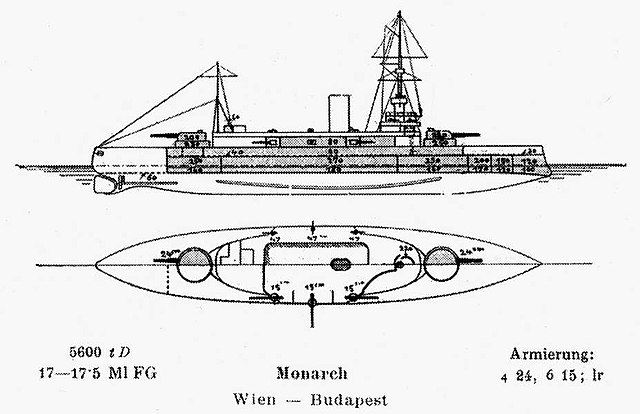Novgorod was a monitor built for the Imperial Russian Navy in the 1870s. She was one of the most unusual warships ever constructed, and still survives in popular naval myth as one of the worst warships ever built. However, a more balanced assessment shows that she was relatively effective in her designed role as a coast-defence ship. The hull was circular to reduce draught while allowing the ship to carry much more armour and a heavier armament than other ships of the same size. Novgorod played a minor role in the Russo-Turkish War of 1877–78 and was reclassified as a coast-defence ironclad in 1892. The ship was decommissioned in 1903 and used as a storeship until she was sold for scrap in 1911.
A scale model of Novgorod as she appeared after 1875
The original configuration of Novgorod, shortly after launch in 1873
Novgorod's arrival in Sevastopol, 1873
Model of Novgorod in her original configuration, held in the Internationales Maritimes Museum Hamburg
Coastal defence ships were warships built for the purpose of coastal defence, mostly during the period from 1860 to 1920. They were small, often cruiser-sized warships that sacrificed speed and range for armour and armament. They were usually attractive to nations that either could not afford full-sized battleships or could be satisfied by specially designed shallow-draft vessels capable of littoral operations close to their own shores. The Nordic countries and Thailand found them particularly appropriate for their island-dotted coastal waters. Some vessels had limited blue-water capabilities; others operated in rivers.
The Finnish coastal defence ship Väinämöinen, one of the last examples of the type.
Side and top views of ARA Independencia in Brassey's 1899 edition
Right elevation and plan of the Monarch class; the shaded area is armored
HDMS Niels Juel in 1939








